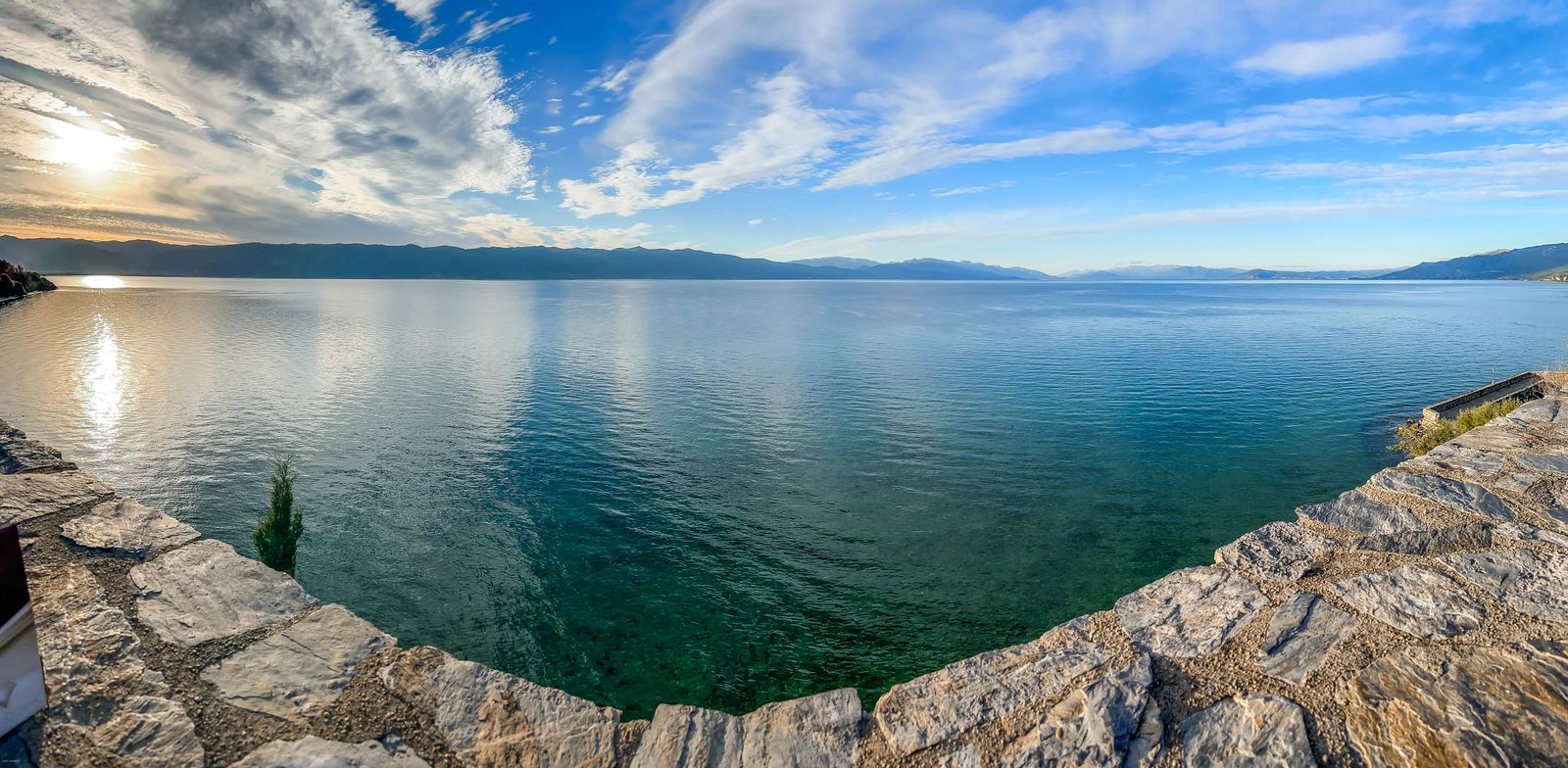
Best Things To See In Lake Ohrid North Macedonia
Lake Ohrid is an unparalleled experience that will leave you in awe. It is one of the 28 natural and cultural UNESCO sites worldwide. The lake boasts protected wetlands and holds the distinction of being the deepest and oldest in Europe, nourished by natural Karst springs. Along its shores, you'll discover ancient churches dating back to the 4th century and pre-historic villages built on the water.
This extraordinary location is also the birthplace of the Cyrillic alphabet and is home to a church for every day of the year. A visit to Lake Ohrid in North Macedonia is an absolute must. As an avid traveler, I personally experienced this enchanting destination in October 2022. Rest assured, this article has been meticulously updated every year to provide you with the most accurate and up-to-date information available.
Is Visiting Lake Ohrid Worth It?
Lake Ohrid is one of those places that are not just beautiful but highly underrated in the travel sphere. It is one of the oldest and deepest lakes in Europe. Lake Ohrid has both cultural UNESCO sites and natural UNESCO sites.
Lake Ohrid is known for its crystal-clear waters, bubbling natural springs, Sveti Naum, the Bay of Bones, monasteries that date back to the Byzantine era, St. John at Kaneo, scuba diving in the deepest lake, hiking, or just merely relaxing on the beach with some freshly squeezed orange juice.
I definitely think visiting Ohrid, Sveti Naum, and the springs is well worth it. I just wish that if I were visiting again, I would allow more time to visit this place—at least a week—to be able to see things properly and allow myself time to relax and enjoy the views.
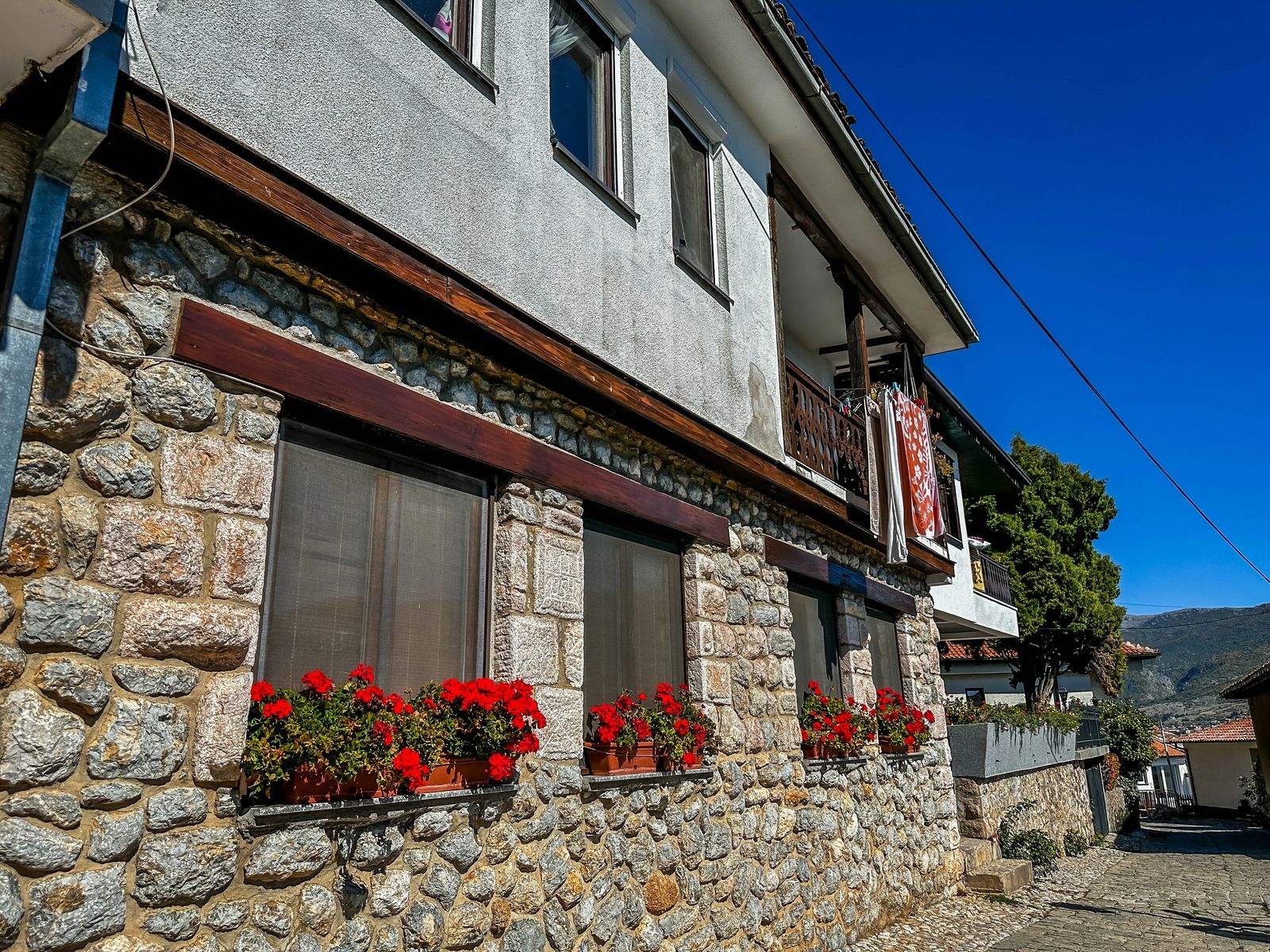
Explore Old Town In Ohrid
The traditional quirky houses look a bit like bobblehead houses in that the tops are very fat, and the bases are narrower. They were once taxed based on the amount of space they occupied on the ground. You can see a few of the traditional homes, like the Robevi Family Home and Museum, built in 1827. Inside, you will find three floors with archaeological objects from the surrounding area on different floors, ranging from ancient to medieval periods. The top part of the house is an exhibit for objects made by the Ohrid carving school.
It is so fun to just wander the ancient streets of Ohrid and see the flower beds, small gardens, laundry, and rugs hanging outside while saying hello to locals. There were once 365 churches in Ohrid, one for every day of the year, but now there are about 18 that are open to visitors. There are also several hammams, mosques, memorial sites, and the Ohrid Clock Tower.
Take a workshop on handmade paper in the town of Ohrid. I find that taking these kinds of classes or cooking classes is a great way to connect with fellow travelers as well.
If you visit from July to August, you will find a summer festival for theater and music, an international choir festival at the end of August, and The Balkan Festival at the beginning of July, which features old folk songs.

St John of Kaneo Church
The walk to this church was beautiful, with sweeping views of the lake, tall pine trees, and a quiet stillness along the way to this picturesque church. It is free to enter and is dedicated to John of Patmos, the writer of Revelation (some consider him to be the same as St. John the Baptist). It was a little disappointing that the church itself was closed while we were there, but talking to some locals, it seems that it isn't often open due to its protected status.
The views from this church are stunning, but due to its full exposure to the sun and the reflective heat from the rock, it can get quite hot. Make sure to bring a hat, sunscreen, and an umbrella.
When we were here in October, there were some orange mums blooming and hundreds and hundreds of butterflies flittering about, feasting on them. It was the most surreal and beautiful sight right next to the lake, and it was hard not to believe that there was a bit of magic here.

Plaošnik - Slavic University
Plaošnik is considered a sacred site in Ohrid; it was once a school. When you visit, do not stop for anyone who does not have a name tag. There was a man smoking in shorts and a t-shirt who tried to get us to pay a fee to enter, but he had no name tag, and there was no one to corroborate his story about a fee to enter the area or the church. Once we got into the church, we asked the man at the visitors' counter, and he said no. I'm all for paying dues to help with archaeology and history, but it just seemed a bit shady how aggressive he was about it.
The Literary School was where the Slavic Language was invented. More than 3,500 disciples were educated by San Clement here, providing a way for the people to read and understand the Bible.
They have also found 2,383 Venetian coin deposits in one of the floors in 2007, indicating that Ohrid and Venice were commercially linked.
During the Ottoman Empire, the school was used as a mosque, and the ruins you see are part of the remains of that mosque, the Sultan Mehmed Mosque. The remains of a church and St. Clement's grave were also found.

Church Of San Clemente
This church was built in the 10th century when San Clement arrived in the area at the request of Boris I of Bulgaria. The church was used to teach some of the first students the Cyrillic language and is very sacred to the people in the Balkans.
The church was overtaken in the 15th century by the Ottomans and turned into a mosque. It was converted back into a church in the 16th century, then overtaken again and turned into the Imaret Mosque. The mosque was burned down, and the church was then rebuilt. The church has undergone extensive excavations that are still ongoing, but it was finished in 2002.
If you go inside the church, you cannot take photos, but make sure you spot San Clement's grave. You can see his resting place through some plexiglass in the floor. The mosaics both outside and inside are intricate, ornate, and beautifully done. All of the reconstruction was done with the same materials and methods that the church was originally built with. Regardless of your faith, this church and the entire complex are well worth the effort to see.
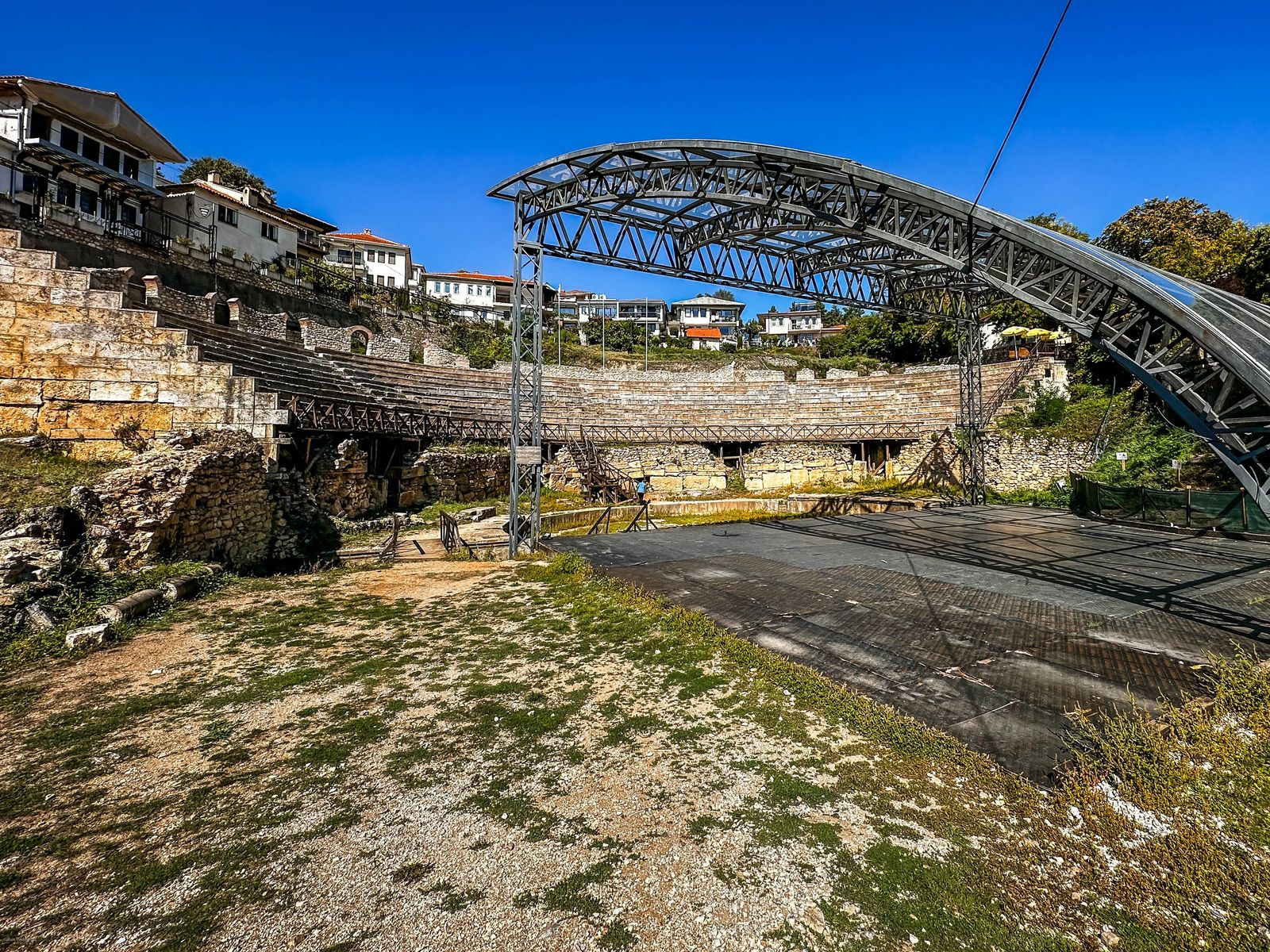
Roman amphitheater
This is the only Hellenistic Roman amphitheater in North Macedonia, built in 200 BC. It once held more than 5,000 people at one time. While the current theater could only excavate the lower portions of the theater due to homes being built on top of the upper portions.
Inside the theater, they found exquisite mosaics of the goddess Dionysus, which are now displayed in the Ohrid museum. There were also wealthy family names inscribed on the stones of the best seats in the theater. It was amazing to think that this theater has seen both Greek plays and Roman gladiator games.
While there weren't any plays going on when we visited, and not much in the way of signs or anything that I would call 'spectacular,' other than the views, it was surreal to be able to sit on the seats that ancient Greeks once sat on thousands and thousands of years ago. Being able to do that is what made the visit spectacular to me, at least.

Samuel's Fort
Once the seat of the Bulgarian Empire in the 11th century, this is Samuel's Fortress. Originally built in the 4th century, it has been used by the Romans, Byzantines, Slavs, and Ottoman Turks. It is called Samuel's Fortress because the ramparts and fortified towers date back to Emperor Samuel, from 976 to 1014.
There were three gates: the Upper Gate (next to the Church of the Virgin), the Front Gate, and the Lower Gate, which provides close access to the lake and is near the Church of St. Nicholas Bolnichki.
The entrance fee is about 1.50 Euro, and they do not accept credit cards, so make sure you have cash. The ramparts offer the best views in the evenings or mornings for sunset or sunrise. Inside, you can still see many outlines of ruins, but the main attraction is the incredible views of the lake and city. Please note that many buildings and museums in Ohrid are closed on Mondays, so make sure you plan your visit accordingly.
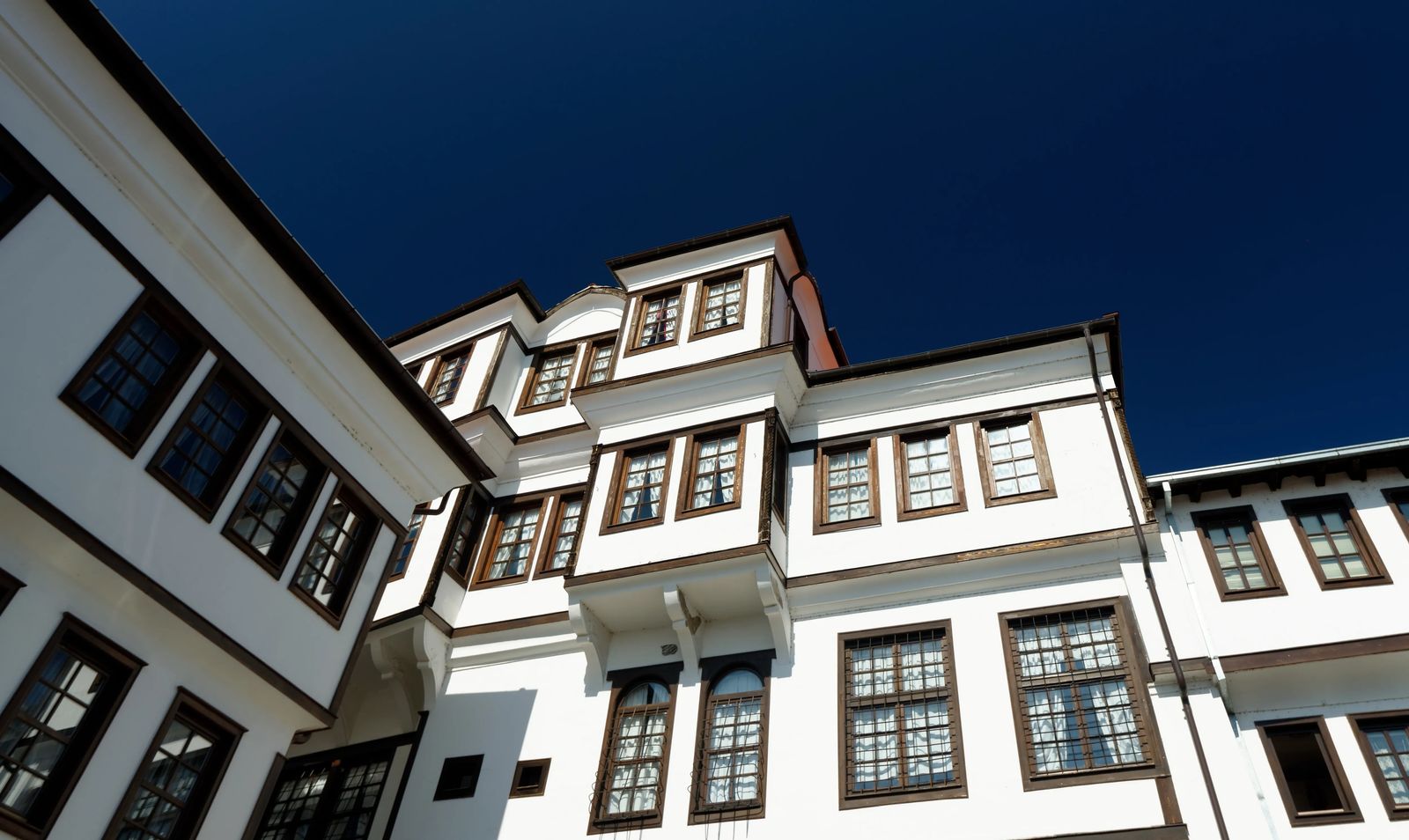
Robevi House
Built in 1827, the Robevi House belonged to a wealthy merchant family in Ohrid who lived here for 35 years. There are three floors inside, with the first floor showcasing important writings related to North Macedonia. Additionally, you can find two torsos of the Egyptian Goddess Isis and several exhibitions on the second and third floors from the medieval periods.
The top floor serves as an exhibit hall for the Ohrid carving school and other artists, as well as displaying some articles from the Robevi Family.

Ohrid Pearls
Lake Ohrid is a freshwater lake, but typically pearls are made from saltwater and oysters. So how are Ohrid pearls made? The famous Ohrid pearls are handmade pearls created by using shells from Lake Ohrid. A special paste is made using the shiny fish scales of Plashica (bleak) fish. The shells are coated with at least eight layers of this secret special mixture. Each layer takes about 45 minutes to an hour to dry.
While many shops here boast of having the best pearls, there are only two families who invented this technique and have passed it on to their children and grandchildren. The Talevi family and the Filevi family guard this secret, and their pearls often come with a steep price tag. However, their pearls have been worn by the likes of Queen Elizabeth, former Foreign Minister Anna Lindh of Sweden, and former Foreign Minister of Bulgaria Nadezhda Mihailova.
The pearls are incredibly unique and have a beautiful softness to them. I couldn't help but buy a few items near the Karst Springs to commemorate the beautiful time I was having here. I think it's so fun to collect unique jewelry from around the globe, both to support local artisans and to have a talking piece to share with friends.
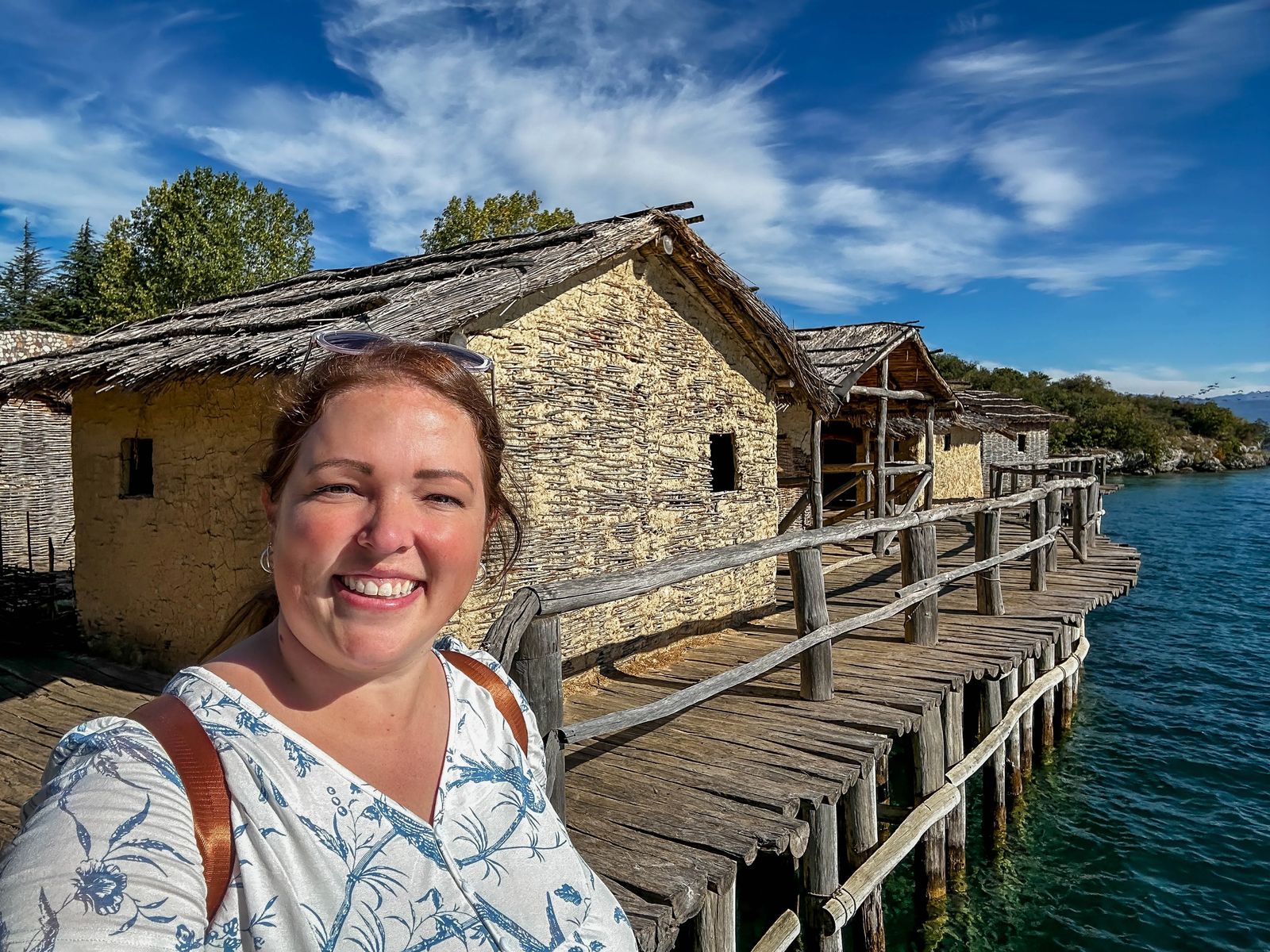
The Bay Of Bones
This is a recreated settlement, rebuilt to mimic the settlements of pile dwellers who lived on top of the water in Lake Ohrid. It was constructed on large tree trunks driven into the lake bed, with wooden planks placed on top of them. This setup allowed for easy fishing, unique fortification, an escape route into the lake from enemies, and a pleasant breeze on hot days like the day we visited.
The name "Bay of Bones" originated from the numerous animal bones discovered by scuba divers. You can see the bones and artifacts they found at the small exhibit/museum near the ticket counter.
When walking out to the settlement, please be aware that the planks are held together by rusty nails. Make sure you wear closed-toed shoes, sunscreen, and a hat, and watch your step. I would hate for you to get injured by a rusty nail without having access to a tetanus shot for safety purposes.
The homes are constructed with thatched walls made of mud and straw, pushed between the wooden sticks to keep out wind and heat. The roofs are thatched with hay and contain hay-lined seats, clay ovens, and fur-lined beds. Animals would stay inside the huts with the family for warmth, and the dung was often used as fuel for fire.
The square homes were intended for regular citizens, while the round homes were reserved for shamans, leaders, and meeting places to distinguish between different houses.
The entrance fee ranges from 2.50 to 5 Euros, depending on the time of year, and you will need cash to enter. The museum charges an additional 2.50 Euros, but personally, I could have skipped that section myself if I'm honest. You can see what is inside from my YouTube video.
The hours listed on the internet are incorrect. If you are visiting in the fall, they close around 2:30 pm, but for the rest of the year, it was mentioned that they stay open from 4 pm to 7 pm. I would personally recommend visiting earlier in the day for the best lighting. In the evening, looking out at the lake, many photos will be backlit, and it can get quite warm.
I found this place personally fascinating, and it was enjoyable to let my imagination run wild and think about what it would have been like to live here and what I would have needed to do to survive. There is also a scuba diving opportunity through the Bay of Bones center, where you can dive in this UNESCO-protected lake and explore the remains of Bronze Age settlements! I really, really want to return to do this myself. You can contact the Bay of Bones Diving Center Amphora via email at sekuloski@yahoo.com or through WhatsApp at +389-71-359-810 to arrange for diving here.
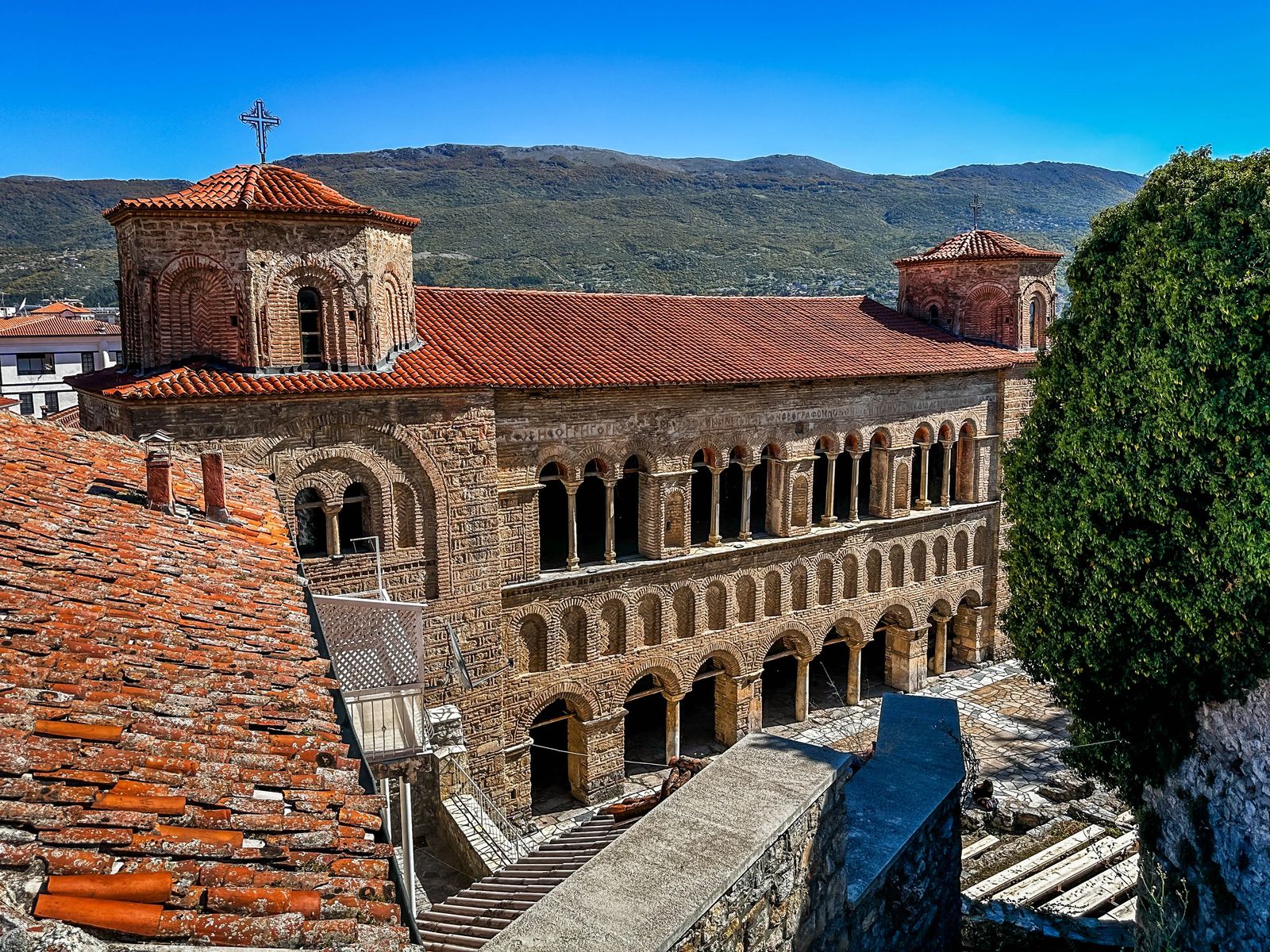
St Sophia Church
Another church in Ohrid that is well worth visiting is Saint Sophia Church for its medieval architecture and the art housed inside. Just inside the nave, you will find a feast festival depicted on the walls. The beautiful blues, golds, and reds are remarkably well-preserved and showcase scenes from the lives of Abraham, St. Basil the Great, and St. John Chrysostom. You can also find depictions of the martyrdom of different Apostles.
It was difficult to determine the specific opening times for this church. Unfortunately, we didn't have the opportunity to go inside, but visiting it will be at the top of my list when I return to Lake Ohrid.

Ohrid Bazaar
If you have the time, you can make the steep walk down to the Bazaar, which is known as the one-street wonder. This is where you will find a variety of quick and easy eateries, leatherworking shops, shoemakers, pearl makers, Turkish delight, kebab, and baklava.
If you continue walking to the center, you will come across a 1,000-year-old tree and a fountain as well.
The Bazaar is more of a cute and quaint area where you can stroll along the waterfront, but it's not a hip or bustling part of town. Ohrid has always been celebrated as a place of deep religious significance rather than one of material or touristic importance. So, keep that in mind as you explore this beautiful area.
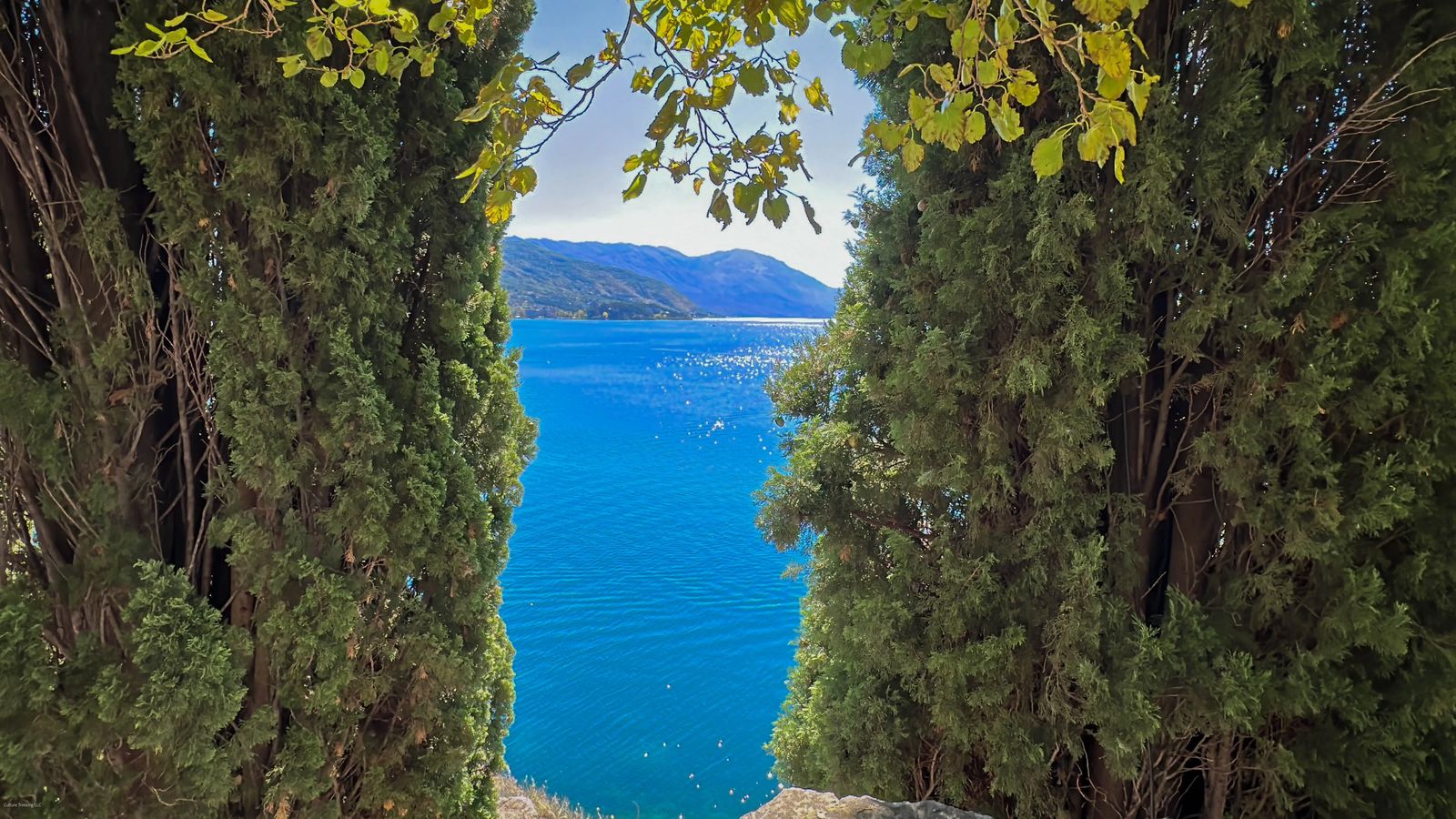
Things To See Near Ohrid
Near Ohrid, you will also find the religious complex of Sveti Naum, which I will cover in more detail in another article. Briefly, it consists of a church, monastery, peacocks, Sveti Naum Springs (which feeds Lake Ohrid and can be reached by a boat ride), two delicious restaurants, Ohrid Pearl shops, touristic souvenirs near the parking lot, a beach with lounge chairs, and much more.
Additionally, you can take a Monastery Wine Tour and Tasting, featuring locally grown grapes. You have the option to enjoy a sunset cruise or a SUP tour of the lake to explore some of the caves along the shoreline. Another exciting activity is taking an ATV ride through Galicica National Park or going on a cruise around the lake to visit the different places that surround it.
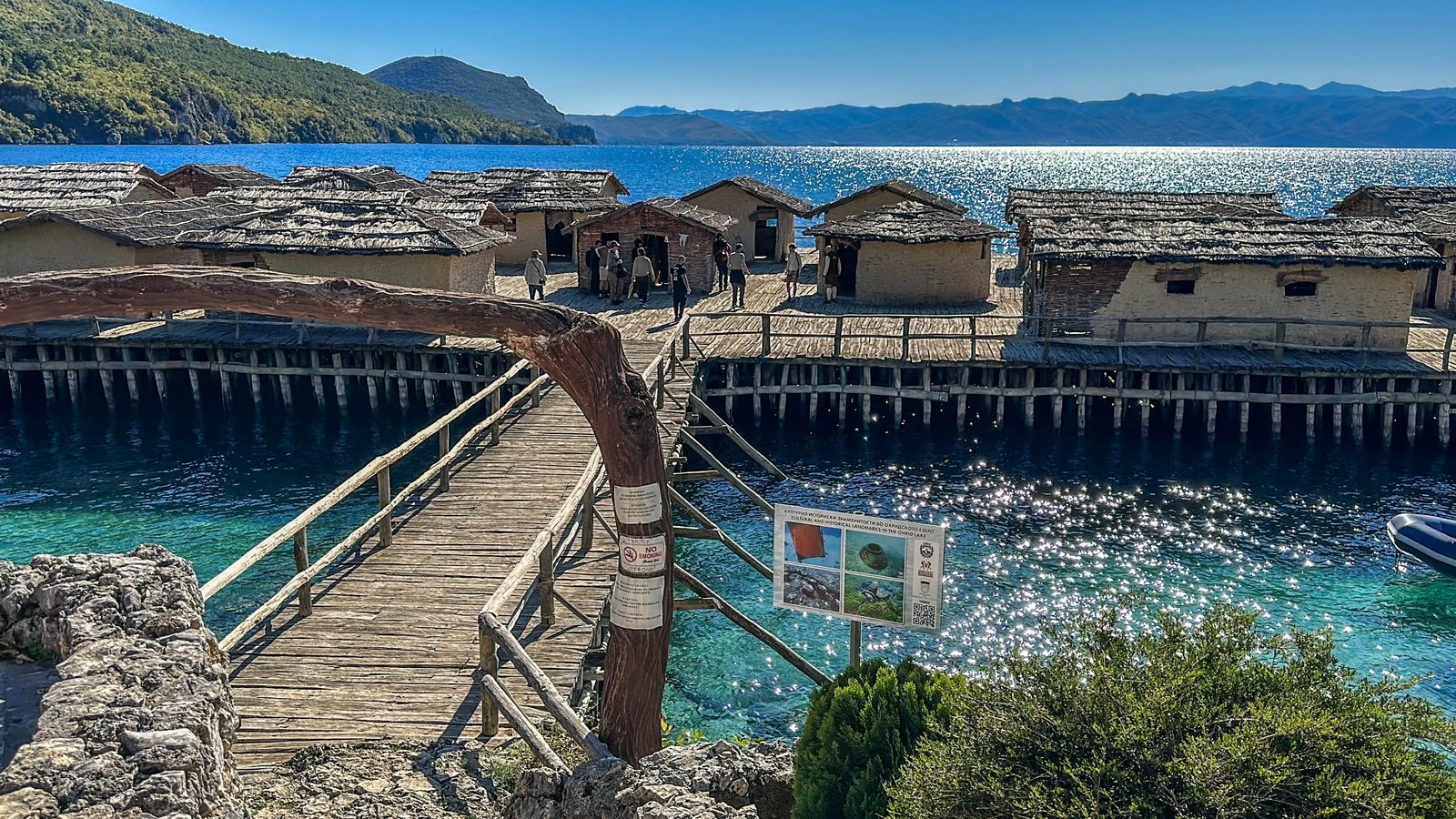
My Takeaway of Visiting Lake Ohrid
My favorite places I have visited around the world always seem to leave me wanting more, or to linger longer - Ohrid was one of those places. It really is one of those places where you can sit, relax, enjoy the delicious food, warm hospitality, incredible history, and meet wonderful people. Being able to see such an old Baptistry, a church built in 900 A.D., and the incredible architecture and place where languages were made - it truly is mind-blowing.
Let me know in the comments below if my article on the best things to see in Lake Ohrid inspired you to visit. I would love to hear if you have visited before and what your thoughts are on each location.
Happy travels friends :)
Guided Tours of Lake Ohrid
Like it? Pin it for later! Sharing is caring ;)
.jpg?fit=outside&w=1600&h=2399)
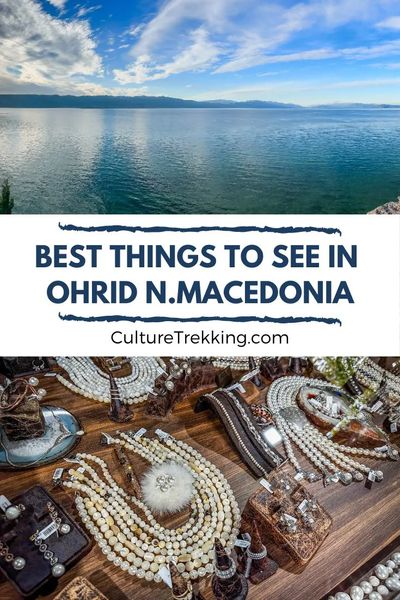.jpg?fit=outside&w=1600&h=2399)
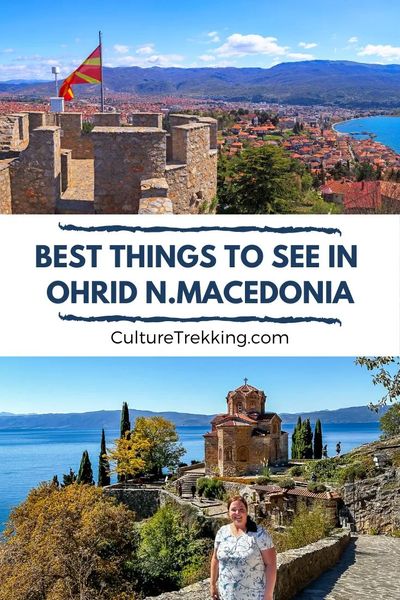.jpg?fit=outside&w=1600&h=2399)
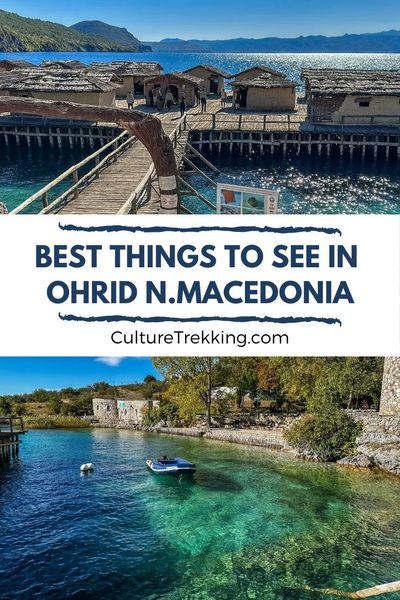.jpg?fit=outside&w=1600&h=2399)
Where to stay in Ohrid
Latest Articles On Culture Trekking
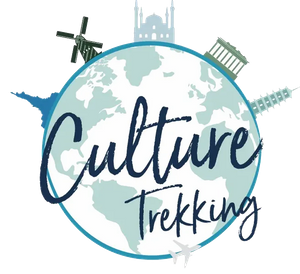

Welcome to Culture Trekking!
My name is Janiel, a leader in the travel industry with over 20+ years of experience with international travel. I specialize in solo female travel, cultural connections, sustainable adventures, food and history to help make your travel experiences fun, meaningful, and delicious. My experience in travel, and my personal story have allowed me to get published in Fodor's Travel, Atlas Obscura, Metro.co.uk, Trip Advisor, and multiple Podcast interviews. You can find me on pretty much every social media channel YouTube, Instagram, Twitter, Facebook, Pinterest, TikTok. To read more about me and my story click here. If you are a brand and would like to work with me, click here.

















